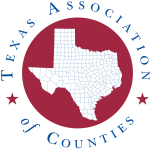County Magazine | May 06, 2025
The 20-year wait
Collin County Jane Doe identified after two decades

In September, Collin County placed a new headstone in a cemetery in the town of Melissa etched with the name Lisa Jacqueline Mellay. It replaced one that had been there for 20 years, marked only as “Jane Doe.”
Mellay had been found dead in 2004 after being hit by a car. She had no identification, and authorities at the time scoured missing persons reports and put out media alerts to find out who she was. Despite numerous tips, they were not able to identify her and classified her case as an “unclaimed person.”
Years later, to their surprise, they got a fingerprint match associated with the name Lori Robinson. She had used 27 different aliases over the years while in and out of jail. Police were never able to verify that Robinson was her real name, so the case languished in county files for the next decade until the Collin County Medical Examiner’s Office decided to reopen her case.
Valerie Alvarez, then a death investigator in Collin County, picked up the search, creating a giant spreadsheet looking for patterns among the names, birth dates and Social Security numbers the woman had provided during bookings. She combed through the National Missing and Unidentified Persons System for days, entering thousands of combinations to uncover her identity.
Eventually, Alvarez came across a yearbook photo on Ancestry.com with an alias the woman had used often, Lisa Mellay. Through jail call logs, Alvarez narrowed in on a possible phone number and at last reached someone who could help: a woman who said her ex-husband’s daughter had gone missing years earlier. Alvarez sent her the photo for verification.
“I would recognize those blue eyes anywhere,” the woman said.
DNA later confirmed Mellay’s identity. That day, Alvarez sat in her office and cried. “It was a long process,” she said. “I didn’t think it would ever happen.”
Mellay’s mom, Jacqueline Parker, now dead, was an up-and-coming jazz artist. Her dad, Gilbert John Mellé, was a famous jazz musician and composer in Hollywood in the 1950s and ’60s. He spent thousands of dollars searching for his daughter before his own death only months after her disappearance.
“She was very well loved,” Alvarez said. “She just was burdened by either a mental illness of some sort or an affliction with drugs, and you know, couldn’t get out of that lifestyle. But she’s always had a family that was looking for her.”
Efforts to identify the unnamed
Seven bodies remain unidentified in Collin County. Last year, the county partnered with the Houston lab Othram to use genetic genealogy to give names to them. Genetic genealogy is relatively new in forensics. Investigators rely on consumer DNA databases to trace family trees. Collin County has also exhumed bodies to get fresh DNA samples to put into the Combined DNA Index System, or CODIS, to identify remains.
“If you’re a death investigator, it kind of bugs you that there are people out there that could be missing, and no one knows they are deceased,” said Robert Laughon, chief field agent for Collin County. “Whatever resources can be used to further this or accomplish their identification should be done.”
Now a senior death inquest investigator with Williamson County, Alvarez has continued her work identifying remains while also carrying out the main functions of her office, working with the medical examiner on inquests to determine causes of death in cases such as suicides, homicides and suspicious deaths.
State law identifies the parameters of which cases are sent to medical examiners. In these cases, death investigators work alongside law enforcement officers at the scene. They take photos and document injuries, identifying marks, details of the scene — information they send to the medical examiner to assist in autopsies as they identify the cause and manner of death. They also research the medical, social and psychological histories of the deceased to assist in the investigation.
A career in forensics
Alvarez was inspired to pursue this line of work while studying anthropology and forensic science at Baylor University. She attended field school on the U.S.-Mexico border, where she helped exhume the graves of people who died crossing into the country. Using DNA, she worked to identify and repatriate them to their families.
“A lot of times, the families don’t know what happened to them,” Alvarez said. “Being able to provide closure was really huge and such a monumental moment in my life.”
Alvarez acknowledges that being a death investigator is a difficult job. “It’s not what you see on TV,” she said.
Today, Alvarez is working with Williamson County on a new program that pairs death investigators with justices of the peace to assist in death inquests. Only 14 of Texas’ 254 counties have medical examiners, so justices of the peace typically handle these responsibilities. The new program is opening opportunities throughout the state for people to pursue these roles. Alvarez has also opened her own company to help families find and identify their loved ones.
“Death affects every single one of us,” she said. “The most rewarding thing that I feel is you are able to help people in maybe one of their most vulnerable times of their life.”
Listen to more from Valerie Alvarez on Ep. 80 of Texas County Voice.

